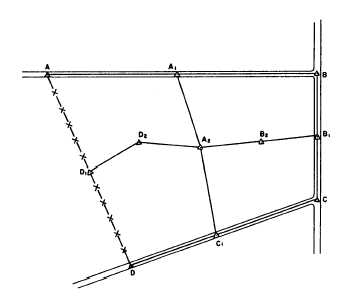TOPOGRAPHIC
CHAPTER 8
SURVEYING AND MAPPING
Topography refers to the characteristics of the land
surface. These characteristics include relief, natural
features, and artificial (or man-made) features. Relief
is the conjuration of the earth’s surface and includes
such features as hills, valleys, plains, summits,
depressions, and other natural features, such as trees,
streams, and lakes. Man-made features are highways,
bridges, dams, wharfs, buildings, and so forth.
A graphic representation of the topography of an
area is called a topographic map. A topographic map
is simply a drawing that shows the natural and artificial
features of an area. A topographic survey is a survey
conducted to obtain the data needed for the preparation
of a topographic map. This data consists of the
horizontal and vertical locations of the features to be
shown on the map.
In this chapter and the following chapter, you will
study methods and procedures used to perform
topographic surveying and to prepare topographic
maps.
TOPOGRAPHIC SURVEYING
The fieldwork in a topographic survey consists
principally of (1) the establishment of a basic frame-
work of horizontally and vertically located control
points (called instrument points or stations) and (2) the
determination of the horizontal and vertical locations of
details in the vicinity of each instrument point. We will
begin our discussions with topographic control.
TOPOGRAPHIC CONTROL
Topographic control consists of two parts:
(1) horizontal control, which locates the horizontally
fixed position of specified control points, and
(2) vertical control, in which the elevations of specified
bench marks are established. This control provides the
framework from which topographic details, such as
roads, buildings, rivers, and the elevation of ground
points, are located.
Horizontal Control
Locating primary and secondary horizontal control
points or stations may be accomplished by traversing,
by triangulation (discussed in part 2 of this TRAMAN),
or by the combined use of both methods. On an
important, large-area survey, there may be both primary
control, in which a number of widely separated primary
control points are located with a high degree of
precision; and secondary control, in which stations are
located with less precision within the framework of the
primary control points.
The routing of a primary traverse should be
considered carefully. It should follow routes that will
produce conveniently located stations. Such routes
might run along roads, ridges, valleys, edges of wooded
areas, public land lines, or near the perimeter of tracts
of land. This latter route is of particular importance for
small areas. When all the details in the area can be
conveniently located from stations on the primary
traverse, you do not need secondary traverses. However,
the size or character of the terrain or both usually make
secondary traverses necessary. Consider, for example,
the situation shown in figure 8-1. This figure shows a
tract bounded on three sides by highways and on the
fourth side by a fence. For simplification, the figure
shows only the items to be discussed. An actual
complete plan would include a title, date, scale, north
arrow, and so forth.
Figure 8-1.-Primary traverse and secondary traverse.
8-1

